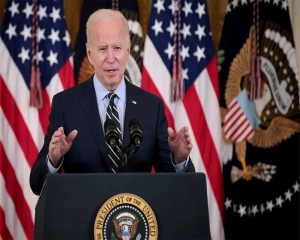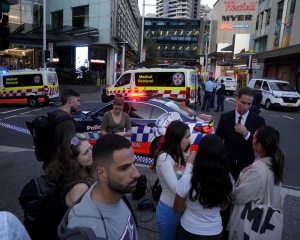It is not sufficient that you have a good product, market & finance. Brand creation helps. And this requires strategy and execution, write Rajiv Gupte & Anand Limaye, as they share examples of marketing strategies used by various brands
Indian advertising has come of age. During pandemic, we saw a host of creative ideas, new business models and communication, which gave new dimension to Indian Brands. Some advertisements attracted controversy as well. Advertisements by Sabyasachi, where they showed Indian Mangalsutra on a scantily dressed woman; FabIndia showing Indian traditional festival celebration with disregard to religion sentiments; and Dabur India, depicting same sex couple celebration Karva Chauth, have not been received well by the Indian audience in India and globally. All these advertisements have been withdrawn from all media. The ads were well noticed, discussed and the brands were well talked about. But does this have a positive impact on the brand or does it tarnish the brand image?
Concept of brand is central to Marketing. Brands bring sales, brands power companies, brands pay salaries. Consumers buy brands because, they are more than trademarks, they are trust marks. Brands are collective perception of consumer’s about an entity. Brands there for exist in consumers mind,where products exists ate the shelf of a retailer.
Strawberry with cream may be your favourite dessert. But when you go fishing, you do not put strawberries there. You put a worm. Something similar happens in marketing. Consumer preference is the most important deciding factor. Consumers often do not buy the highest quality products. They buy the best value proposition depending upon their need and perception.
In the 1990s, Parle products, the confectionery and biscuits major in India, had a brand called, Rol-a-Cola candy. This was launched at the time when cola drinks were hooting up the market. Rol-a-Cola had an attractive price point of Rs 2. Over a period of time, the brand was dropped in 2006 for the purpose of product portfolio rationalisation. Although consumers loved it so much that they would mix it with soda and water and make their own cola drink at a low cost. In 2019, a Twitter user communicated his desire to have the product and requested a comeback. The rolls segment is about 7,000 tonnes, and Parle has a 50 per cent share with high-power brands like Mazelo Poppins. The brand was relaunched for Gen Z at an attractive price point which would contribute to Rs 100 crore revenue for Parle products. The brand today is far more vibrant and caters to the wants of consumers.
Yet another way is to never have a product proposition very similar to another product. You will have to spend a lot to establish in such a market. If there are two products similar to each other, a lot of promotional money is wasted. If one detergent brand says, ‘first use it and then have trust’, while another says ‘buy with complete trust’, both will be unnecessarily using a lot of promotional resources. Have a distinct product proposition, create a distinct identity for your product and serve a unique need of a consumer, at least in a unique manner. Our earlier observation on perceptual maps supports this suggestion. In a crowded market as well, if the products are differentiated, each has a place to exist and grow.
Good brands promise certain quality. The quality could be tangible like comfort, fitting, elegance in case of men shirts, or intangible like prestige, luxury, style. This collective perception about brand is called positioning.
Brand positioning
By repeated hammering of the message marketers create brand position. Brand position of Lux is beauty soap, Liril is freshness soap, and Lifebuoy is sportsman’s soap. The position is created and reinforced by consistent communication like endorsement of film actors (Lux), waterfall and lemon slice (Liril), sports activities (Lifebuoy). Once a position is achieved, it is difficult for the competitors to dislodge it, as long as it is not weakened by the marketer’s in consistent communication or over spent by competitors. Lux is essentially a ladies soap. When Shahrukh Khan endorsed the brand, Santoor gained easy entry. Line extensions of Liril and millennial advertising showing family togetherness was inconsistent with earlier position. Cinthol gained an entry for the freshness position. Lifebuoy repositioned the brand as Germi Check and went head on with Dettol. A classic overexerting from positioning point of view.
Titan launched Raga and Fastrack. A good brand portfolio segments the market and targets the consumers and then communicates with them effectively. Historically, no global watch brand has created a product specifically for women. Indian women are different from Westerns and, therefore, a distinct consumer group. For Indian women, jewellery is an intimate treasure and possession. Also, the need to be considered sensuous is very high but in an Indian way. Thus, the brand Raga watches looks like jewellery and make a beauty statement. Average ownership of watches by women after Raga was launched jumped to 65 per cent.
Similarly, for Fastrack, the insights were that urban youth were rapidly discovering the excitement of an uncommitted attitude and lifestyle. Also, for Indian college-going youth, style and affordability were key and, thus, came Fastrack. The price was stated upfront and sent a clear signal to the youth of its affordability. The students were told that the brand looked for inspiration on whatever was interesting to youth-denims, hip hop, beachwear, skating, tattoos, etc. Later, the brand was extended to affordable sunglasses and bags.
It is better to create a distinct identity. The positioning of SPINZ fragrance is distinct from that of FOGG, that of India today, Republic TV, WION, and Times Now are all distinct and different. But, creating such identity requires consistent communication. In today’s world of over communication, chances are, once message would get missed in a clutter. So what is the most effective way of cutting through clutter and taking a position in consumers mind?
Celebrity endorsements: Yes, It does help. It helps in cutting through the clutter of other messages, gives a distinct image to the brand, and adds prestige. It also has a rub-off effect of the celebrity image on the brand. But not always.
Celebrity clutter: Sometimes, marketers use over exposed celebrities. If the celebrity endorses too many brands, your brand gets lost. How many people remember, which milk additive brand does Sachin Tendulkar endorse? Or, which apparel brand does Amitabh Bachchan endorse?
Positioning fit: Many times Brands are endorsed by celebrity, whose image is not consistent with the message, to be delivered. A few years ago film star Jitendra endorsed a brand called 30+. It was a serious health tonic, which was inconsistent with Jitendra’s Jumping Jack image. It was an elegantly executed advertisement, but the brand failed.
Execution fit: Just a good celebrity and a product, is not good enough to create a brand. The execution has to be good. Cricketer Hanse Kronje endorsed a suiting brand in a badly executed advertisement or Rajesh Khanna for a ceiling fan company. The brand is not even endorsed now.
Credibility fit: Endorser's’ image gets rubbed up on the brand, mostly positively, but how many of us believe that Amitabh Bachchan uses Anar dana or Navratna Tel?. Such ads do not meet aspirations of consumers.
Celebrity under clout: At times if the endorsing celebrity gets bad publicity due to some reason, the brand suffers. Marketers have to be careful about it, otherwise along with positive image the negative of the endorser's also rub off. When Tiger Woods gained bad publicity due to his promiscuous behaviour, he lost most of his brands. But, I am amazed that today so many ads have come featuring celebrities who have bad publicity, like Shahrukh Khan for BJYUS or Shilpa Shetty for good morning brand. Yes, it will give top of the mind awareness. But, brand image? It will help celebrities, but brands?
Owners Endorsement: Air India was a lagging brand. But with Tata take over, it has gained a new image. Tata’s means trust. Air India has suddenly become a trusted brand. The position has changed from a lagging brand to one which can be trusted. Apart from other things, will surely have a positive impact on the image, as well as business. The cash register will start ringing which is visible in the stock market already.
Thus it is important that it is not sufficient that you have a good product, market and finance. Brand creation helps. This requires strategy and execution. Marketing strategies have much in common with war strategies. After all brands create loyalty, brands give price premiums and brands ensure sustainance.
The writers Rajiv Gupte & Anand Limaye are authors. Their latest book, Brand Wars: Combat Strategies for Indian Brands, has been published by SAGE Publications India


























